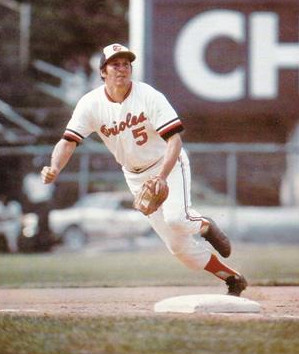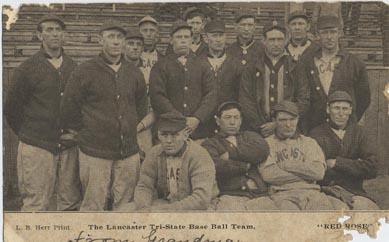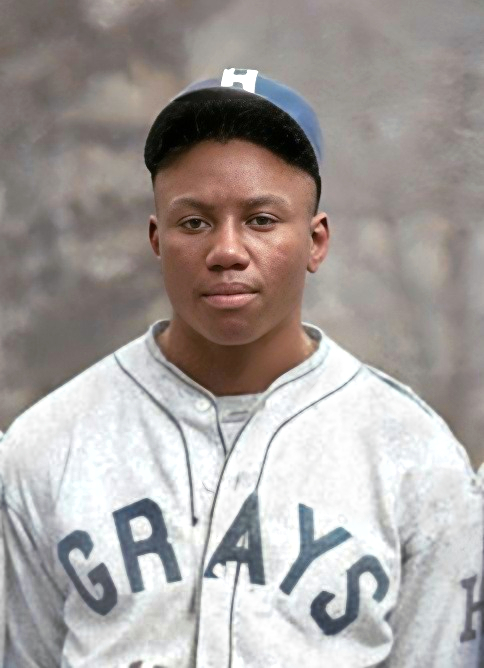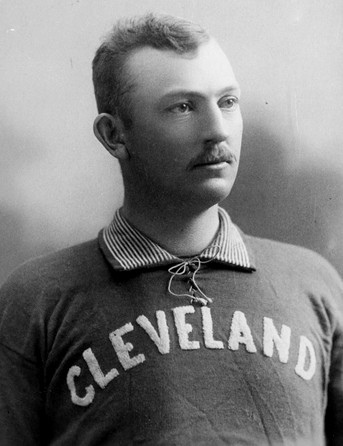|
Joe Yeager
Joseph Francis Yeager (August 28, 1875 – June 29, 1937), nicknamed "Little Joe", was an American professional baseball infielder and pitcher. He played 10 seasons in Major League Baseball (MLB) for the Brooklyn Bridegrooms/Superbas, Detroit Tigers, New York Highlanders, and St. Louis Browns. Early years Yeager was born in Philadelphia in 1875. Professional baseball Yeager began playing professional baseball in the minor leagues, including two years with the Lancaster Maroons from 1896 to 1897. In 1897, he compiled a 26–11 win–loss record as a pitcher and had a .345 batting average. In 1898, Yeager made his major league debut with the Brooklyn Bridegrooms. He had 32 complete games and a respectable earned run average but lost 22 games for a team that finished in 10th place."Joe Yeager Statistics and ... [...More Info...] [...Related Items...] OR: [Wikipedia] [Google] [Baidu] |
Third Baseman
A third baseman, abbreviated 3B, is the player in baseball or softball whose responsibility is to defend the area nearest to third base — the third of four bases a baserunner must touch in succession to score a run. In the Baseball scorekeeping, scoring system used to record defensive plays, the third baseman is assigned the number 5. Third base is known as the "hot corner", because the third baseman is often the infielder who stands closest to the batter—roughly 90–120 feet away, but even closer if a Bunt (baseball), bunt is expected. Most right-handed hitters tend to hit the ball hard in this direction. A third baseman must possess good hand-eye coordination and quick reactions to catch batted balls whose speed can exceed . The third base position requires a strong and accurate arm, as the third baseman often makes long throws to first base or quick ones to second baseman, second base to start a double play. As with middle infielders, right-handed throwing players are ... [...More Info...] [...Related Items...] OR: [Wikipedia] [Google] [Baidu] |
Lancaster Maroons
The Lancaster Red Roses baseball team, originally known as the Maroons, changed its name at the start of the 1906 season during a bitter match with the York, Pennsylvania-based White Roses. Some sources indicate that the rival teams were named for the opposing factions in England's historic Wars of the Roses. The Lancaster Red Roses played at Stumpf Field in Manheim Township, Pennsylvania, which is still used today by local baseball and softball leagues. History 19th century Organized baseball first came to Lancaster, Pennsylvania in 1884 when Lancaster had two teams for a brief period of time. The Lancaster Red Stockings played 19 games as a member of the short-lived Keystone Association before the league broke up in June 1884. The Lancaster Ironsides played in the Eastern League beginning in 1884. The team remained in Lancaster for the 1885 season under a new name, the Lancaster Lancasters. Baseball returned for Lancaster in the 1894 season when the Pennsylvania State Leagu ... [...More Info...] [...Related Items...] OR: [Wikipedia] [Google] [Baidu] |
19th-century Baseball Players
The 19th century began on 1 January 1801 (represented by the Roman numerals MDCCCI), and ended on 31 December 1900 (MCM). It was the 9th century of the 2nd millennium. It was characterized by vast social upheaval. Slavery was abolished in much of Europe and the Americas. The First Industrial Revolution, though it began in the late 18th century, expanded beyond its British homeland for the first time during the 19th century, particularly remaking the economies and societies of the Low Countries, France, the Rhineland, Northern Italy, and the Northeastern United States. A few decades later, the Second Industrial Revolution led to ever more massive urbanization and much higher levels of productivity, profit, and prosperity, a pattern that continued into the 20th century. The Catholic Church, in response to the growing influence and power of modernism, secularism and materialism, formed the First Vatican Council in the late 19th century to deal with such problems and confi ... [...More Info...] [...Related Items...] OR: [Wikipedia] [Google] [Baidu] |
1937 Deaths
Events January * January 1 – Anastasio Somoza García becomes President of Nicaragua. * January 5 – Water levels begin to rise in the Ohio River in the United States, leading to the Ohio River flood of 1937, which continues into February, leaving 1 million people homeless and 385 people dead. * January 15 – Spanish Civil War: The Second Battle of the Corunna Road ends inconclusively. * January 23 – Moscow Trials: Trial of the Anti-Soviet Trotskyist Center – In the Soviet Union 17 leading Communists go on trial, accused of participating in a plot led by Leon Trotsky to overthrow Joseph Stalin's regime, and assassinate its leaders. * January 30 – The Moscow Trial initiated on January 23 is concluded. Thirteen of the defendants are Capital punishment, sentenced to death (including Georgy Pyatakov, Nikolay Muralov and Leonid Serebryakov), while the rest, including Karl Radek and Grigory Sokolnikov are sent to Gulag, labor camps and later murdered. They were i ... [...More Info...] [...Related Items...] OR: [Wikipedia] [Google] [Baidu] |
1875 Births
Events January * January 1 – The Midland Railway of England abolishes the Second Class passenger category, leaving First Class and Third Class. Other British railway companies follow Midland's lead during the rest of the year (Third Class is renamed Second Class in 1956). * January 5 – The Palais Garnier, one of the most famous opera houses in the world, is inaugurated as the home of the Paris Opera. * January 12 – Guangxu Emperor, Guangxu becomes the 11th Qing dynasty Emperor of China at the age of 3. He succeeds his cousin, the Tongzhi Emperor, who had no sons of his own. * January 14 – The newly proclaimed King Alfonso XII of Spain (Queen Isabella II's son) arrives in Spain to restore the monarchy during the Third Carlist War. * January 24 – Camille Saint-Saëns' orchestral ''Danse macabre (Saint-Saëns), Danse macabre'' receives its première. February * February 3 – Third Carlist War: Battle of Lácar – Carlist commander Torcuat ... [...More Info...] [...Related Items...] OR: [Wikipedia] [Google] [Baidu] |
Newspapers
A newspaper is a Periodical literature, periodical publication containing written News, information about current events and is often typed in black ink with a white or gray background. Newspapers can cover a wide variety of fields such as politics, business, sports, art, and science. They often include materials such as opinion columns, weather forecasts, reviews of local services, Obituary, obituaries, birth notices, crosswords, editorial cartoons, comic strips, and advice columns. Most newspapers are businesses, and they pay their expenses with a mixture of Subscription business model, subscription revenue, Newsagent's shop, newsstand sales, and advertising revenue. The journalism organizations that publish newspapers are themselves often Metonymy, metonymically called newspapers. Newspapers have traditionally been published Printing, in print (usually on cheap, low-grade paper called newsprint). However, today most newspapers are also Electronic publishing, published on webs ... [...More Info...] [...Related Items...] OR: [Wikipedia] [Google] [Baidu] |
Squeeze Play (baseball)
In baseball, the squeeze play or a squeeze bunt is a maneuver consisting of a sacrifice bunt with a runner on third base. The batter bunts the ball, expecting to be thrown out at first base, but providing the runner on third base an opportunity to score. Such a bunt is most common with one out. According to Baseball Almanac, the squeeze play was invented in 1894 by George Case and Dutch Carter during a college game at Yale University. In a safety squeeze, the runner at third takes a lead, but does not run towards home plate until the batter makes contact bunting. A play at home plate is possible. In a suicide squeeze, the runner takes off as soon as the pitcher begins the windup to throw the pitch, and before releasing the ball A ball is a round object (usually spherical, but sometimes ovoid) with several uses. It is used in ball games, where the play of the game follows the state of the ball as it is hit, kicked or thrown by players. Balls can also be used for s ... ... [...More Info...] [...Related Items...] OR: [Wikipedia] [Google] [Baidu] |
Slugging Percentage
In baseball statistics, slugging percentage (SLG) is a measure of the batting productivity of a hitter. It is calculated as total bases divided by at-bats, through the following formula, where ''AB'' is the number of at-bats for a given player, and ''1B'', ''2B'', ''3B'', and ''HR'' are the number of singles, doubles, triples, and home runs, respectively: : \mathrm = \frac Unlike batting average, slugging percentage gives more weight to extra-base hits such as doubles and home runs, relative to singles. Such batters are usually referred to as sluggers. Plate appearances resulting in walks, hit-by-pitches, catcher's interference, and sacrifice bunts or flies are specifically excluded from this calculation, as such an appearance is not counted as an at-bat (these are not factored into batting average either). The name is a misnomer, as the statistic is not a percentage but an average of how many bases a player achieves per at bat. It is a scale of measure whose computed ... [...More Info...] [...Related Items...] OR: [Wikipedia] [Google] [Baidu] |
On-base Percentage
In baseball statistics, on-base percentage (OBP) measures how frequently a batting (baseball), batter reaches base (baseball), base. An official Major League Baseball (MLB) statistic since 1984, it is sometimes referred to as on-base average (OBA), as it is rarely presented as a true percentage. Generally defined as "how frequently a batter reaches base per plate appearance", OBP is specifically calculated as the ratio of a batter's times on base (the sum of Hit (baseball), hits, base on balls, bases on balls, and times hit by pitch) to the sum of at bats, bases on balls, hit by pitch, and sacrifice fly, sacrifice flies. OBP does not credit the batter for reaching base on error (baseball), fielding errors, fielder's choice, uncaught third strikes, Obstruction (baseball), fielder's obstruction, or catcher's interference, and deducts from plate appearances a batter intentionally giving himself up in a sacrifice bunt. OBP is added to slugging average (SLG) to determine on-base plus ... [...More Info...] [...Related Items...] OR: [Wikipedia] [Google] [Baidu] |
Shortstop
Shortstop, abbreviated SS, is the baseball positions, baseball or softball fielding position between second base, second and third base, which is considered to be among the Defensive spectrum, most demanding defensive positions. Historically, the position was assigned to defensive specialists who were typically poor at batting and were often placed at the bottom of the Batting order (baseball), batting order. Today, shortstops are often able to hit well and many are placed at the top of the lineup. In the Baseball positions, numbering system used by Baseball scorekeeping, scorers to record defensive plays, the shortstop is assigned the number 6. More hit balls go to the shortstop than to any other position, as there are more Right-handedness, right-handed hitters in baseball than Left-handedness, left-handed hitters, and most hitters have a tendency to Pull hitter, pull the ball slightly. Like a second baseman, a shortstop must be agile, for example when performing a Glossary of b ... [...More Info...] [...Related Items...] OR: [Wikipedia] [Google] [Baidu] |
Cy Young
Denton True "Cy" Young (March 29, 1867 – November 4, 1955) was an American Major League Baseball (MLB) pitcher. Born in Gilmore, Ohio, he worked on his family's farm as a youth before starting his professional baseball career. Young entered the major leagues in 1890 with the National League (baseball), National League's Cleveland Spiders and pitched for them until 1898. He was then transferred to the St. Louis Cardinals franchise. In 1901, Young jumped to the American League and played for the Boston Red Sox franchise until 1908, helping them win the 1903 World Series. He finished his career with the Cleveland Indians, Cleveland Naps and History of the Boston Braves, Boston Rustlers, retiring in 1911. Young was one of the hardest-throwing pitchers in the game early in his career. After his speed diminished, he relied more on his control and remained effective into his forties. By the time Young retired, he had established numerous pitching records, some of which have stood for ... [...More Info...] [...Related Items...] OR: [Wikipedia] [Google] [Baidu] |
Adjusted ERA+
Adjusted ERA+, often simply abbreviated to ERA+ or ERA plus, is a pitching statistic in baseball. It adjusts a pitcher's earned run average (ERA) according to the pitcher's ballpark (in case the ballpark favors batters or pitchers) and the ERA of the pitcher's league. Formula ERA+ is calculated as: \mathit = 100 \cdot \cdot \mathit Where ERA is the pitcher's ERA, lgERA is the average ERA of the league, and PF is the park factor of the pitcher in question. This formula is now standard, although Baseball-Reference.com briefly used a different formula which took values strictly between 0 and 200 instead of between 0 and infinity, but the current website shows values above 200 so it is clearly no longer in use: \mathit = 100 \cdot (2 - \cdot ) The average ERA+ is set to be 100; a score above 100 indicates that the pitcher performed better than average, while below 100 indicates worse than average. For instance, imagine the average ERA in the league is 4.00: if pitcher A has ... [...More Info...] [...Related Items...] OR: [Wikipedia] [Google] [Baidu] |









